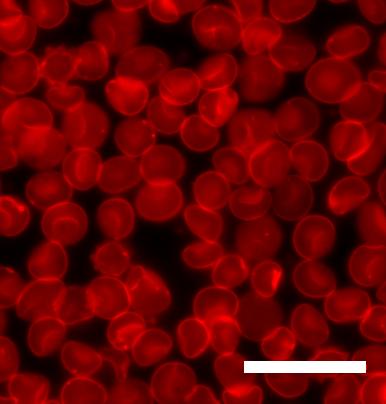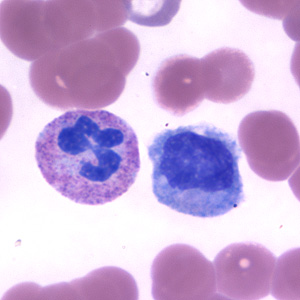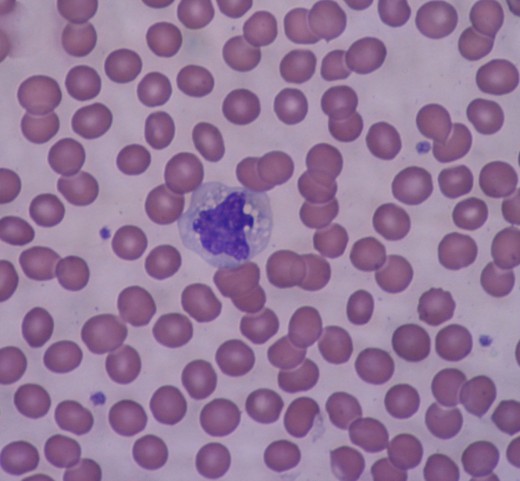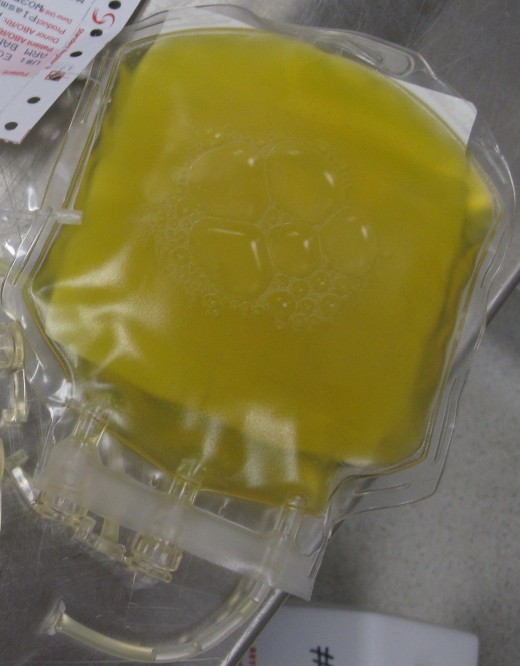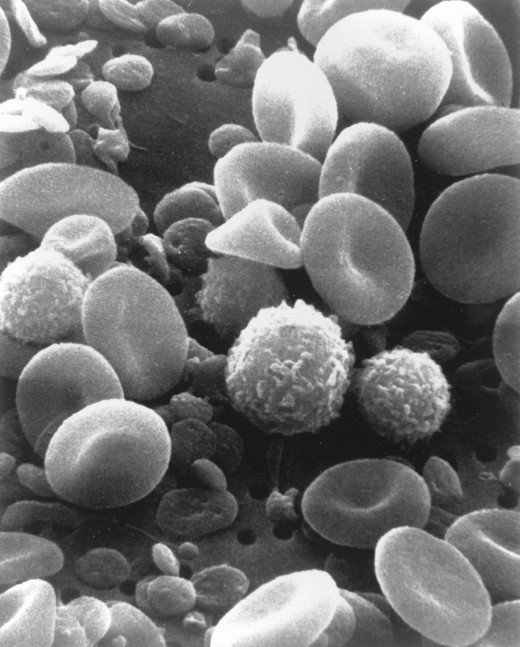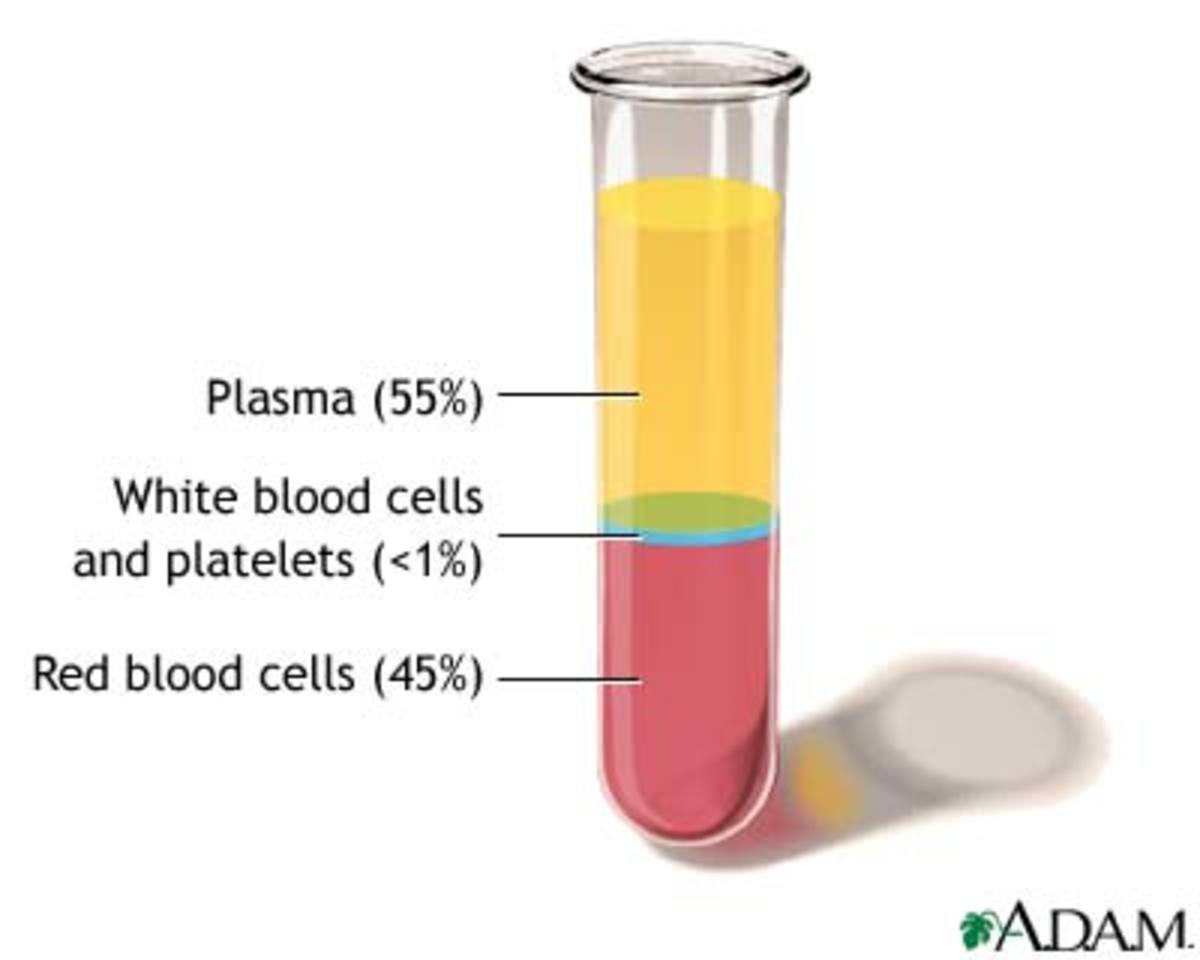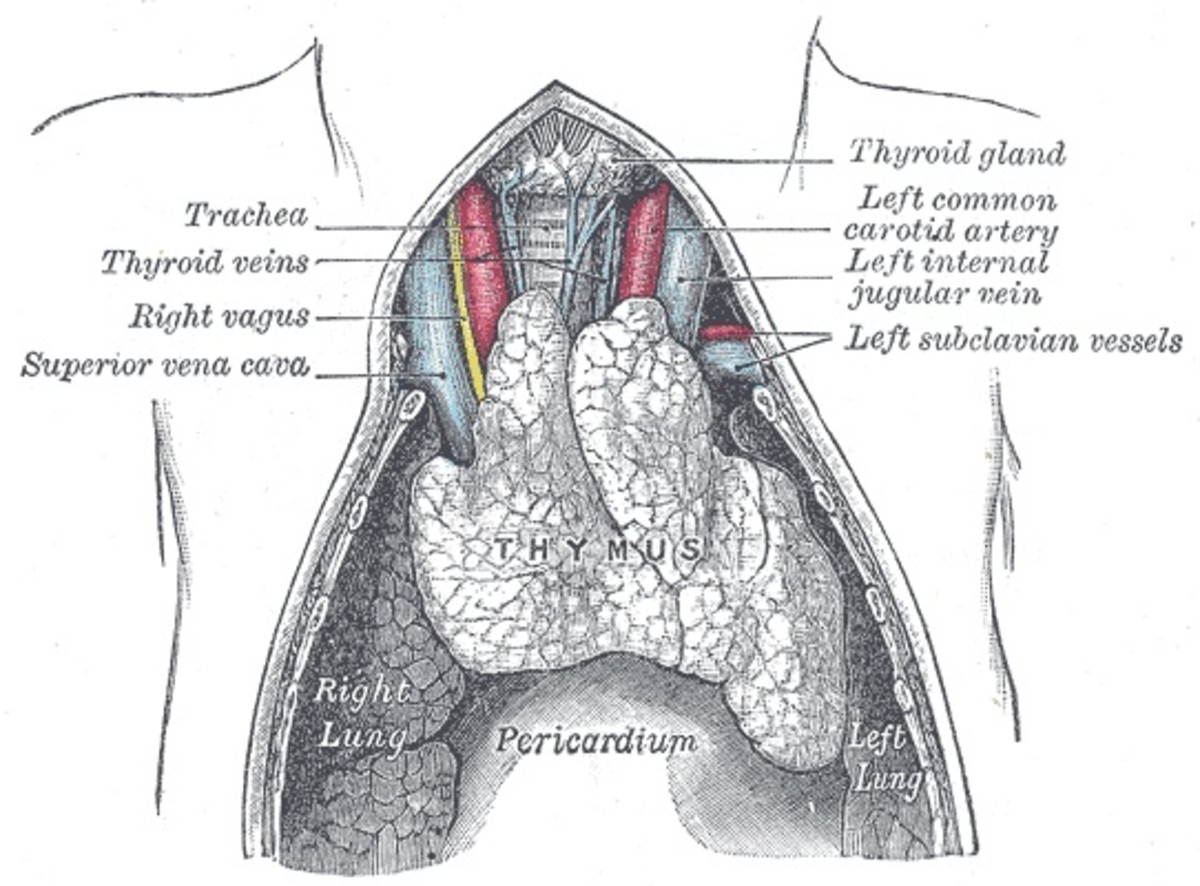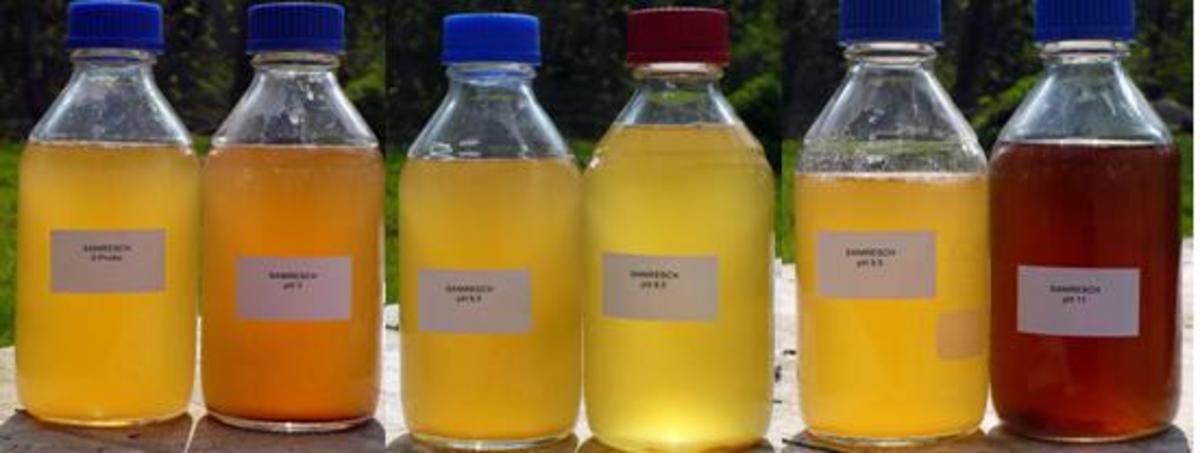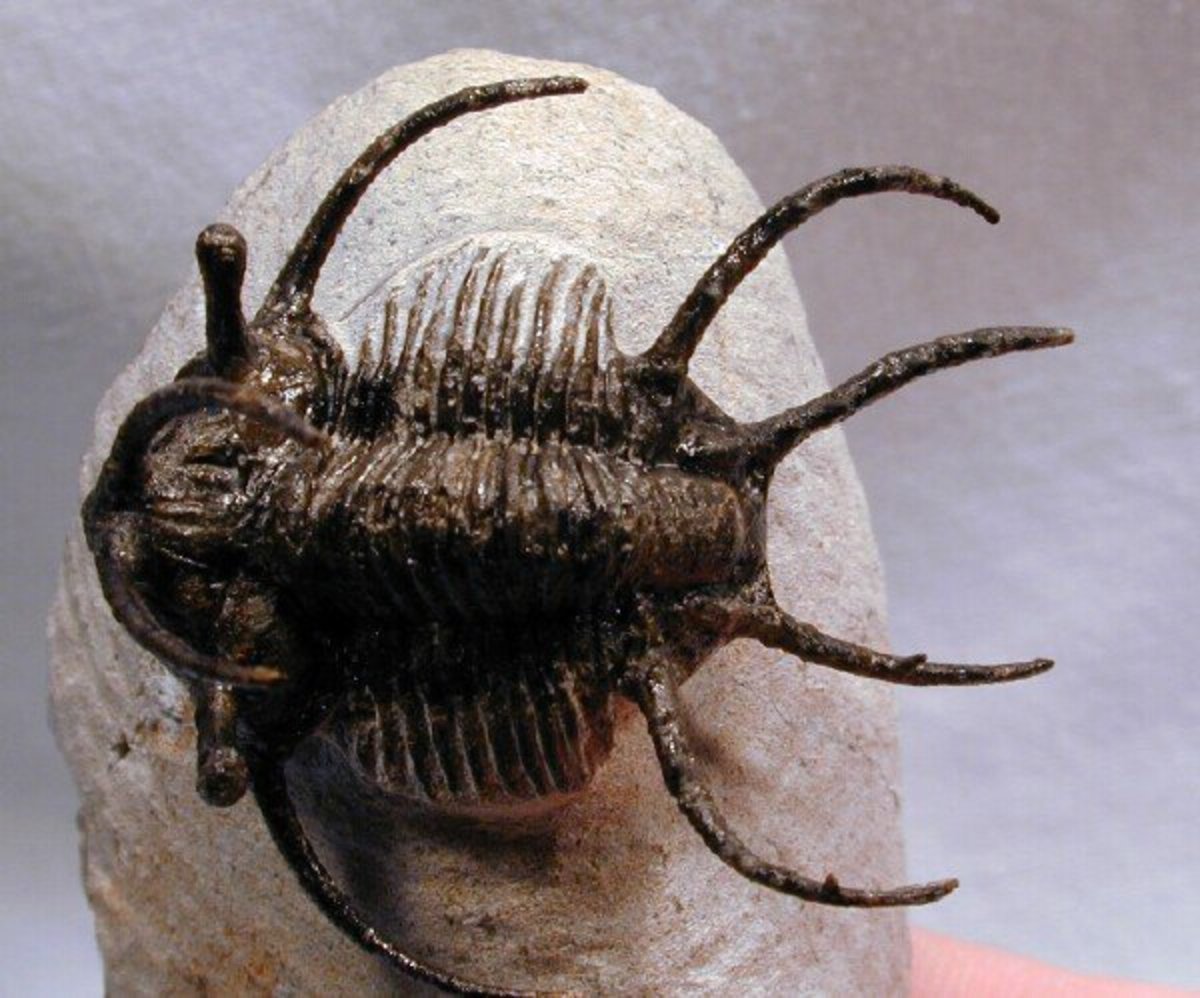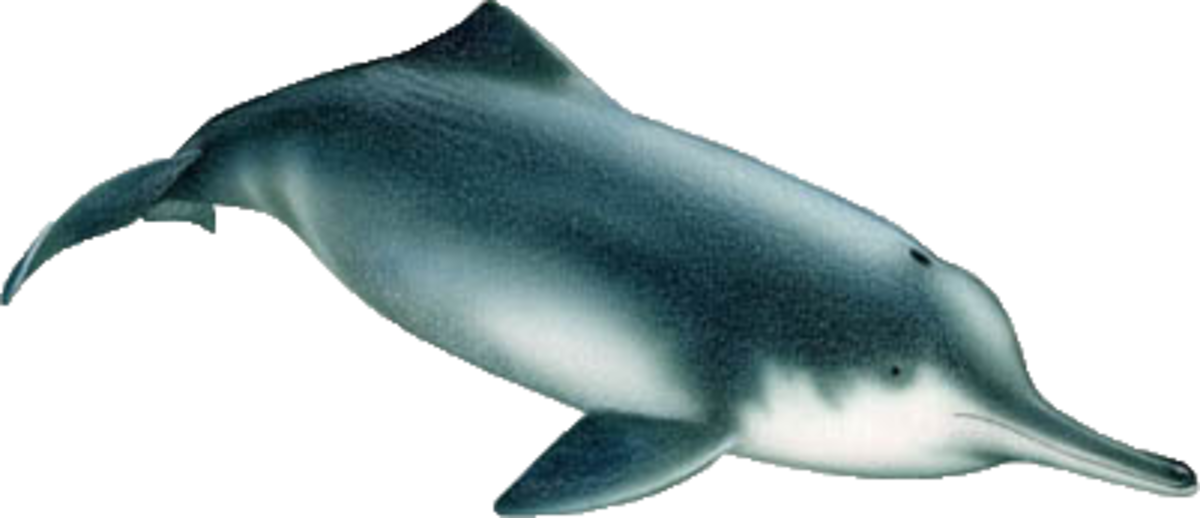How Does Blood Work?
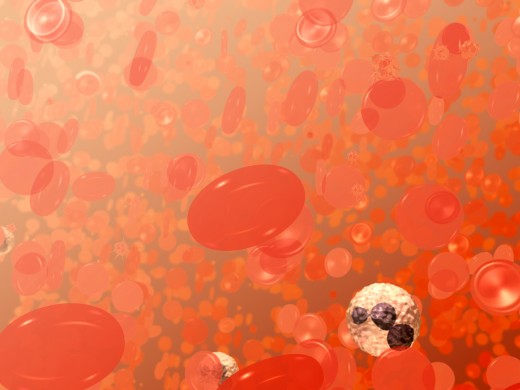
What is the Role of Blood?
Contrary to popular belief, blood is not the river of life. The vast majority of life on our planet makes do without it. Bacteria, Fungi and Plants aside, the vast majority of animals on our planet lack blood. Insects, molluscs and arthropods use an open circulatory system and haemolymph instead of blood.
Nevertheless, blood has a number of vital roles to play in the lives of reptiles, birds, mammals, fish and amphibians. The most important of these roles are:
- Gas Exchange: Red blood cells transport oxygen from the lungs to every cell in the body. These cells also shuttle carbon dioxide from respiring cells to the lungs for removal.
- Immune System Defender: White blood cells are the foot soldiers of the immune system - detecting, attacking and destroying invading cells.
- Wound Healer: Platelets help plug the gaps left in the walls of blood vessels due to injury
- Waste Removal: Blood is 'cleaned' of its excess salts and urea in the kidneys - these are removed as waste urine.
- Logistics: Blood transports chemical messengers (hormones) around the body, moves sugar for storage in the liver, and delivers vitamins, enzymes and electrolytes to the cells. All thanks to transport proteins in the plasma.
Quite the comprehensive list for something as seemingly simple as blood!
Components of Blood
Click thumbnail to view full-size




Components of Blood
Component
| Amount
| Function
|
|---|---|---|
Plasma
| 54%
| Made of 92% water, plasma carries the other components. Also regulates mineral exchange and pH
|
Red Blood Cells (Erythrocytes)
| 45%
| Carry oxygen to living tissue and return carbon dioxide to the lungs
|
White Blood Cells (Leukocytes)
| <1%
| The body's defence system. There are five types of leukocyte, each with a special function
|
Platelets (Thrombocytes)
| <1%
| Help repair damage to blood vessels - essential in blood clotting
|
A diverse collection of specialised cells: your blood feeds you, heals you and fights battles for you.
Blood Facts
- Blood makes up around 8% of your bodyweight.
- Between 2.0 and 2.4 million red blood cells are made by your body every second!
- Your heart pumps over 7,000 litres of blood every day.
- Until week 23 of pregnancy, red blood cells are made in the liver, not in bone marrow.
- The first successful human-to-human blood transfusion was performed in 1818 by James Blundell for treatment of post-partum haemorrhage.
- But this was mainly luck! Blood types were not discovered (by Karl Landsteiner) until 1901.
What is Blood Plasma?
By percentage, the largest component of your blood is plasma. This straw-coloured liquid carries all of the other parts of the blood and is made of 92% water. The remaining 8% is made up of different proteins, salts and hormones.
What Are Red Blood Cells?
Red blood cells, or erythrocytes, make up the majority of the 'solid' portion of your blood. They are so numerous because they perform the most vital function of blood - transport of oxygen and carbon dioxide.
As an adult, your red blood cells are continuously being made by red bone marrow (your liver does the job as a foetus) at the rate of around 2million every second. These cells don't survive long - only about 120 days. The reason for this is red blood cells do not have a nucleus - it is kicked out of the cell just before it finishes developing to give more space for oxygen-carrying haemoglobin.
Haemoglobin gives every red blood cell its distinctive red colour. This complex protein molecule acts like a weak magnet for oxygen and carbon dioxide: it can pick these gases up, but also let them go when necessary. This makes haemoglobin very good at moving these two important gases around the body. As red blood cells release their oxygen, they pick up carbon dioxide; this process acts in reverse at the lungs.
Blood Quiz
view quiz statisticsWhat are White Blood Cells?
Leukocytes, or white blood cells, are a relative rarity in the blood; they are outnumbered 600:1 by red blood cells. There are five types of white blood cell:
- Neutrophils: the most common (50-70%) white blood cell and often first to the site of an infection. They work by eating these invader particles.
- Eosinophils: guard against parastitic worms and control the allergic response. One of the rarest white blood cells (around 5%)
- Basophils: comprise less than 1% of white blood cells, these cause inflammation and promote blood flow to infected/damaged areas.
- Monocytes: can be twice the size of red blood cells. These monsters also eat their way through invading pathogens. (5-10%).
- Lymphocytes: make up around a quarter of the white blood cell population. These produce antibodies (important for acquired immunity) and command other cells to commit suicide.
These cells are also made by red bone marrow, from the same precursor cells as red blood cells: haematopoietic stem cells. These stem cells develop into different cells based on what sort of signal they receive. If the bone marrow starts to produce increased numbers of immature or abnormal leukocytes, then there is no space left for normal cells and the normal functions of the blood are disrupted. This is leukemia.
Have you ever given blood?
What are Platelets?
Platelets are also known as Thrombocytes and play a vital role in plugging any leaks that happen to spring up. They aren't really cells, but fragments of much larger stem cells found in bone marrow. These cells fragments are also very sticky and weave a protein called fibrin around the site of wounds. This mesh traps other blood cells and platelets to form a physical barrier around the wound. This gives time for skin cells around the wound to divide and replicate to heal the injury.
What is Blood?
Blood Disorders
There are a number of common diseases and disorders that affect the blood. This is not surprising given the number of different factors that need to be balanced.
Haemochromatosis - 'iron overload' is one of the most common genetic disorders of the blood. This condition results in your body absorbing and storing too much iron from food. At its most serious this can cause liver damage, irregular heartbeat, diabetes and heart failure.
Haemophilia - is one of the most uncommon genetic disorders of the blood. This condition prevents the blood from clotting - this makes even minor injuries potentially life-threatening. This condition is much more common in men and is caused by a missing clotting factor in the blood.
Thalassemia - reduces how much haemoglobin (the protein that carries oxygen in red blood cells) is made by the body. This results in a condition called anaemia - a lack of red blood cells - this means less oxygen gets to the body's cells. This affects around 100,000 newborn babies each year
Sickle-cell Anaemia - another genetic disorder that affects 1-in-625 children of African descent. Due to a mutation in the haemoglobin gene, red blood cells become rigid and sickle-shaped - this means they get stuck in capillaries and cause blood clots. The abnormal red blood cells are also quite poor at transporting oxygen, resulting in anaemia.
Deep Vein Thrombosis (DVT) - thrombosis is a medical term for any blod clot that is big enough to block a blood vessel. When this clot forms in the deep veins of the body (usually the upper thigh) it is called deep vein thrombosis. If such a clot shakes free, it can become lodged in the arteries of the lung, causing a pulmonary embolism - and even death.

